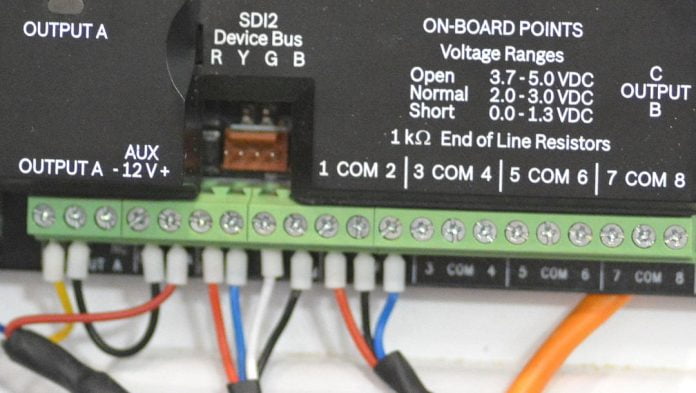Q: What are some tips and tricks when it comes to walking onto a site with an alarm system malfunction and very quickly establishing the problem?
A: Experience helps, especially experience with the system in question. Most wiring failures will involve short-to-ground, or shorted circuit caused by insulation failure or a stripped wire or whisker in contact with a metal component like the chassis, a panel housing or a mounting bracket. Another common failure is caused by an open circuit resulting from a broken wire or a broken connection or termination, especially if there’s vibration or thermal expansion and contraction – particularly in poorly ventilated electrical boxes installed in direct sunlight.
If you arrive at a site planning to troubleshoot a cable plant, it’s valuable to remember that before spending hours of diagnostic time crawling along cable trays you should test all the panel fuse circuits using a DVOM or test light. Don’t just look at them. A fuse can fail even if the surface doesn’t look burned or there’s no obvious break in the fuse. Use your test probes and when you find a failed fuse, pull and give a good clean, especially on the contact points. Also look for lose fuse connectors inside the fuse chamber. If you replace one fuse, do them all.
It goes without saying that the bulk of wiring failures are the result of connection failures at the end of cable runs in stressful environments. If you have some intermittent power problems, the place to start looking is these wiring connections – they’ll very likely be corroded – even slight corrosion is enough. The solution is to pull the connector from the termination and tidy it up with electrically compatible corrosion inhibitor. You may need to strip the cable and nip the wire back and re-terminate.
When you’re working alone, use a DVOM with a min/max voltage alarm when testing for intermittent failure. This tool will record the highest voltage, sounding an alarm when a higher voltage occurs. If you’re performing a cable movement test looking for intermittent failure and you need both hands, this is perfect. Another useful tool when seeking loose ground connections is a lab scope, which will highlight these problems as a voltage spike in an otherwise flat signal. You can also use a short detector when hunting short to ground circuits. These tools aren’t expensive and they’ll let you discover shorts hidden by other cables or fascia panels. Buy the best you can as the higher its quality, the greater its range.
#securityelectronicsandnetworks.com









